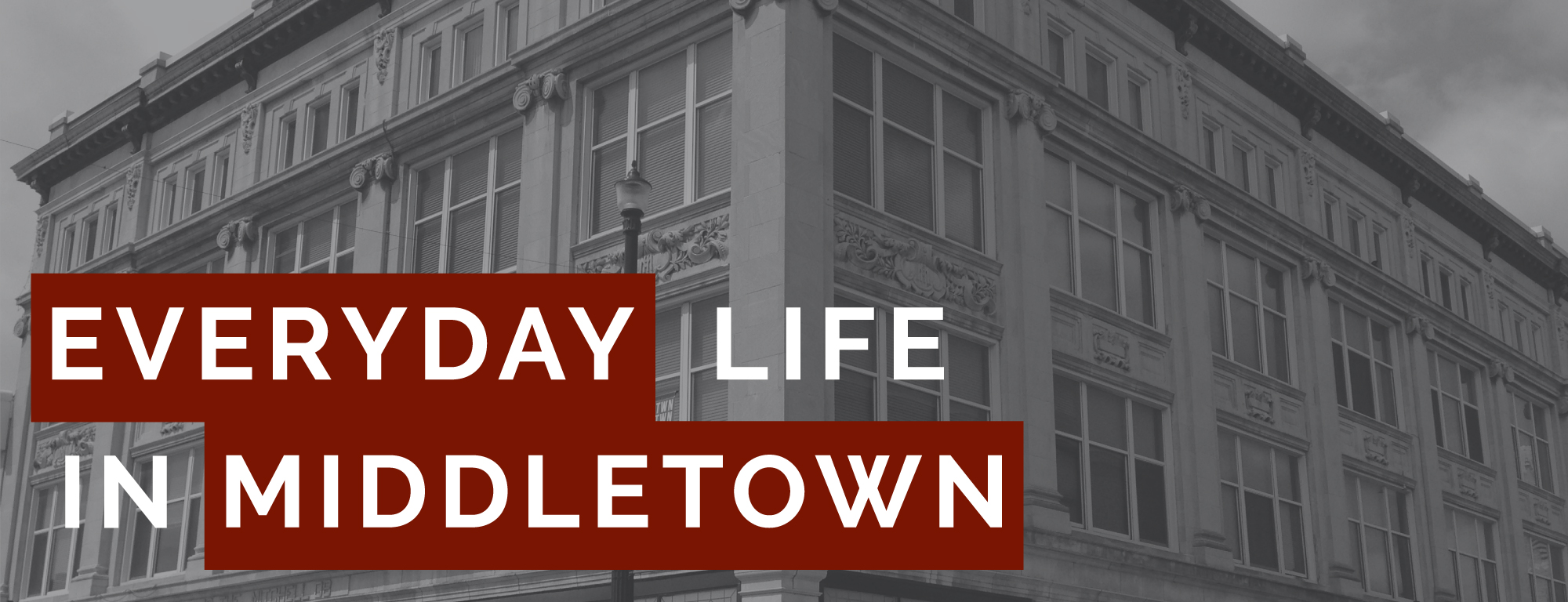We are being encouraged to live in the moment a good deal these days.
The classical “Carpe Diem” (seize the day) has transformed into the acronym “YOLO” (for “you only live once”) and become a full-blown meme, popularized by the rap artist Drake.
Meanwhile the copious self-help literature around mindfulness—the effort to discipline oneself, via meditation practices, into focusing on the present—promises a path to serenity that exists in “the country of the present moment.”
These cultural injunctions to live in the moment—whether for hedonistic or ascetic reasons—could give you the impression that we’re obsessed with the future. And our American ideology of individual pursuit of wealth and success—with its accompanying values of hard work and education—does suggest a future-oriented shared consciousness.
But looking for the future—and its role in everyday consciousness—in the Everyday Life in Middletown diaries results in a more complicated picture. Unquestionably, the future exerts its pressures on the present. But the future shows up more subtly than you might expect, as often in action as in thought.
In the diaries, talk of the future is predominantly focused on the short term. Yes, the dairies reveal us in the act of looking ahead—but not, most of the time, to the medium-long future of careers, upward mobility, of hopes and worry for ourselves and our families. The future that is most present in the diaries is the future that lies just ahead: the afternoon’s work activities, the evening’s leisure, the remainders of the day’s task list.
“I left at 2:15 in anticipation of going to my second job at 3:30 after running back to Muncie to let my dogs out” writes one diarist. Another spends a travel day—a day of airport security lines and meals consumed in transit—looking forward to snuggling with her dog.
In the morning, the day ahead is the relevant time-frame. “…I feel like this is going to be an easy day,” a diarist writes. “And I think, ‘Don’t jinx it.’” A graduate student fuels up at a campus restaurant on eggs and a latte as she considers the rigor of the day ahead.
The penumbra of the short-term future extends ahead a few days. A busy day concludes with a diarist going online to see whether “there are any emails or messages regarding this weekend.” On a meditative walk, another remembers that her grandmother’s birthday is tomorrow.
This short-term orientation—in which our gaze toggles between the task immediately at hand and the next few things, like a driver’s eyes shifting from the speedometer to the road ahead—is the most common time-frame of the diaries. Cultural critic Rita Felski calls this orientation “everyday time,” and describes it pithily as “our daily sense of time most strongly influenced by the relentless, impersonal regularities of clocks and timetables, by the frenzied flickering pace of television and media culture, or by the subterranean flow of natural bodily rhythms.”
Felski distinguishes “everyday time” from two other categories: “life-time” and “large-scale time.” “Life-time” describes the way we craft our experiences into a story about ourselves, the way we link our past and those of our families with the present and future. This is the time-frame of careers and life stories, the “process of understanding one’s life as a project that encompasses and connects the random segments of everyday experience.” Broader still, “large-scale time” links our lives to the lives of others and to an imagined, shared future: this is time as conceived of in terms of common history, of social movements and political campaigns.
Interestingly, Felski suggests that “life-time” is the dominant mode of the personal diary, where writers evaluate whether their efforts of self-fashioning and self-help are paying off in better lives, better careers, better selves.
The fact that the Everyday Life in Middletown diaries contain more “everyday time” lies perhaps in the prompt we respond to when we write: to record “everything you do, and what you’re thinking and feeling as you do it.” This prompt emphasizes the doing first, and thus perhaps pushes our writers towards awareness of their immediate activities, which in turn inspire thoughts and feelings that are more focused on the present than we might find in a traditional, private diary.
But “life-time”—the time frame of “the creation of oneself as an autobiographical subject”—is certainly present in the EDLM diaries, as well. It is notable that April 27, 2018—our most recent diary day—was a week before graduation at Ball State, prompting parents and students to look, with excitement and anxiety, towards the future.
In her extraordinary diary of that day, a Ball State senior careens from activity to activity, her day shadowed by the major life changes looming: her brother is applying for colleges, and she will be leaving BSU with her diploma in a week. She and her hair stylist chat about “time passing too quickly,” prompting the thought, “Time is a major factor in my life lately. It feels heavy.” Crossing campus, amid people packing up cars to move out of the dorms, she finds “tears in my eyes at leaving this place.” As the day winds down, and she faces the prospect of writing final essays for her classes, she is torn between daily obligations and the desire to reflect—between everyday-time and life-time. She laments: “I want to write about things ending. About how life feels right now. Instead I have to write about witchcraft and about Africa.”
Such moments of transition—graduating, moving, changing jobs—can thus prompt our minds to move among time frames and highlight tensions between present obligations and visions of the future.
Personal trauma can also set one’s consciousness floating, much more painfully, across past, present, and future.
Consider the diary of a massage therapist who is grieving the death of her son. Writing about this loss, and how it impacts her everyday life, causes her to range among time frames—mourning the loss of a future that will not happen, facing and pondering regret, returning to the immediate reality of daily responsibilities. She notes explicitly that the diary is helping her process all this. Trying to view things from a larger perspective, from the framework of large-scale time, proves discouraging just now: activism for a better, shared future appears futile or self-serving. Her mind tacks away from it and finds a temporary mooring in everyday activities—the work she does to help her clients—as a source of meaning and stability. She writes:
“Diseases of addiction so permeate the human condition that we might as well be talking about the need for clean water in the Sudan as seeking a solution to the Opioid Epidemic or comparing the use of prescriptions for ADHD to the abuse of Meth or Cocaine. It is only the seemingly sane and socially concerned who want to discuss these issues. It is only the privileged who can find the time. Or someone who is grieving the loss of a loved one….
“I am pretty angry and discouraged and, I am not supposed to be this way. I am privileged. I am self-employed. I have a water purifier and enough land to grow what I imagine is an organic garden. I am a Massage Therapist and a Yoga Instructor. I want to help people to free themselves from some of the pain and suffering that permeated the human condition and, I think that I do. I am privileged.”
Her diary is a powerful expression of the search for provisional meaning, sufficient to make it through the day, in a time of trauma. And its evocation of gardening brings to light another profound truth about the presence of the future in the everyday: that even when we are not talking or thinking consciously about the future, we are building it through actions.
A garden is literally a life-building activity, and one that expresses a powerful, if implicit, belief in the future. In the midst of the anguish, and the many appointments of a typically busy day, the massage therapist swings by the garden center to buy “Basil and Rosemary plants and a few bags of dirt.” Though she has trimmed her garden back a bit, “there are a few things that seem urgent about it on this beautiful spring day.” And she is not the only gardener among us: an educator who works with autistic children manages, in between the two part-time jobs she juggles, to buy and plant some seed potatoes. She has been gardening so much that she’s been feeling it in her back and legs.
Going to school, teaching, gardening, child-rearing, exercise: all of these activities that are so central to everyday life are profoundly future-oriented, life-building activities. They emphasize the degree to which the future is always present in the everyday, most deeply, perhaps, when we’re not thinking about it.
–Patrick Collier


